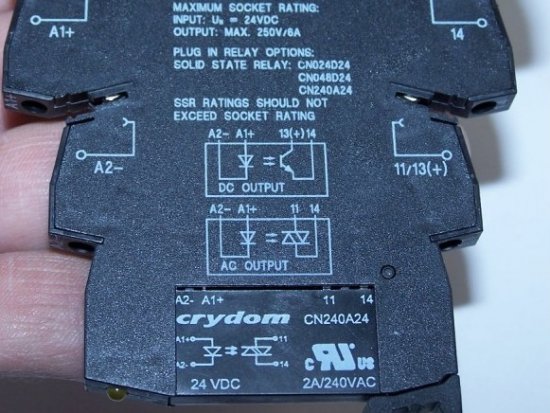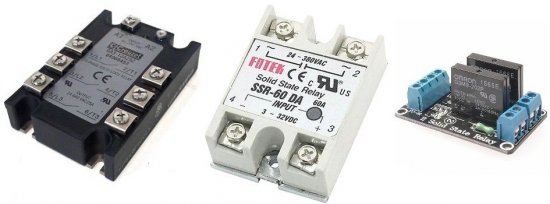Optorelay — device, principle of operation, application
Which is usual electromagnetic relay — perhaps everyone knows. The inductor attracts a moving contact to its core, which in this case opens or closes the load circuit. Such relays can switch large currents, control powerful active loads, provided that switching events occur quite rarely.
If switching using a relay is carried out at a high frequency or the load is inductive, the relay contacts will quickly burn out and disrupt the normal operation of the equipment whose power is switched on and off by this electromagnetic mechanism.
Therefore, the disadvantages of electromagnetic relays are obvious: mechanically moving parts, their noise, limited switching frequency, cumbersome structure, rapid wear, need for regular maintenance (contact cleaning, repair, replacement, etc.)
Optorelay is a new word for high current switching. From the name of this device it is obvious that it performs the function of a relay, but it is somehow related to optical phenomena. And that is actually the case.
If in a conventional relay the galvanic isolation of the control circuit from the power supply unit is carried out using a magnetic field, then in the opto-relay it is used to separate optocoupler — a semiconductor component, the primary circuit of which acts on the secondary with photons, that is, through a distance filled with a non-magnetic substance.
There is no core here, no mechanically moving parts. The secondary circuit of the optocoupler controls the commutation of the supply circuit. Transistors, thyristors, or triacs driven by a signal from an optocoupler circuit are directly responsible for power-side switching.
There are no moving parts at all, so switching is silent, it is possible to switch large currents at high frequency, while no contacts will burn out, even if the load is inductive. In addition, the dimensions of the device itself are smaller than those of its electromagnetic predecessor.
As you probably already guessed, the principle of operation of the optical relay is quite simple. On the control side, there are two terminals to which the control voltage is supplied. The control voltage, depending on the opto-relay model, can be variable or constant.
Optorelay NF249:
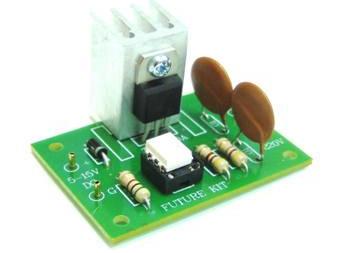
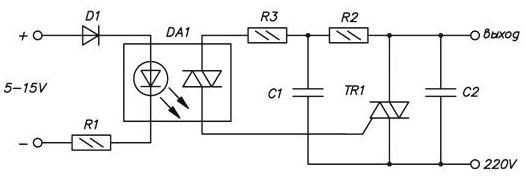
Typically, in popular single-phase opto-relays, the control voltage reaches 32 volts with a control current within 20 mA. The control voltage is stabilized by a circuit inside the relay, brought to a safe level and acts on the control circuit of the optocoupler. And the optocoupler, in turn, controls the unlocking and locking of semiconductor devices on the supply side of the opto-relay.
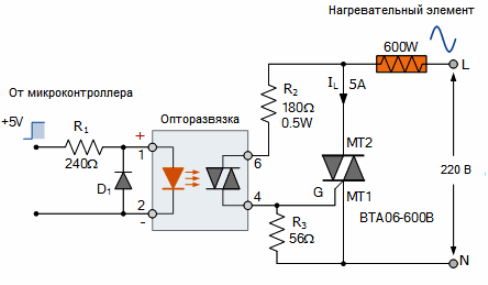 On the power supply side of the opto-relay, in its simplest form, there are also two terminals that connect the relay in series to the switched circuit. The terminals are connected inside the device to the outputs of the power switches (a pair of transistors, thyristors or triac), the characteristics of which determine the limiting parameters and operating modes of the relay.
On the power supply side of the opto-relay, in its simplest form, there are also two terminals that connect the relay in series to the switched circuit. The terminals are connected inside the device to the outputs of the power switches (a pair of transistors, thyristors or triac), the characteristics of which determine the limiting parameters and operating modes of the relay.
Today it is switched from similar, so-called solid state relays the current can reach up to 200 amperes at voltages up to 660 volts in the switched load circuit. According to the type of current supplying the load, opto-relays are divided into DC and AC switching devices. AC optical relays often have an internal zero-current switching circuit, which facilitates the life of power switches.
Today, solid-state relays with opto-relay in their design are widely used where they are conventional electromagnetic starterswhich required regular maintenance and cleaning and did not withstand the rigors of a mechanical device.
Single-phase and three-phase opto-relays, DC and AC opto-relays, low-current and high-power, reversing and non-reversing opto-relays for motor control - you can choose any opto-relay for any purpose, starting from thermostat control for a powerful heating elementending with starting, reversing and stopping powerful engines.

